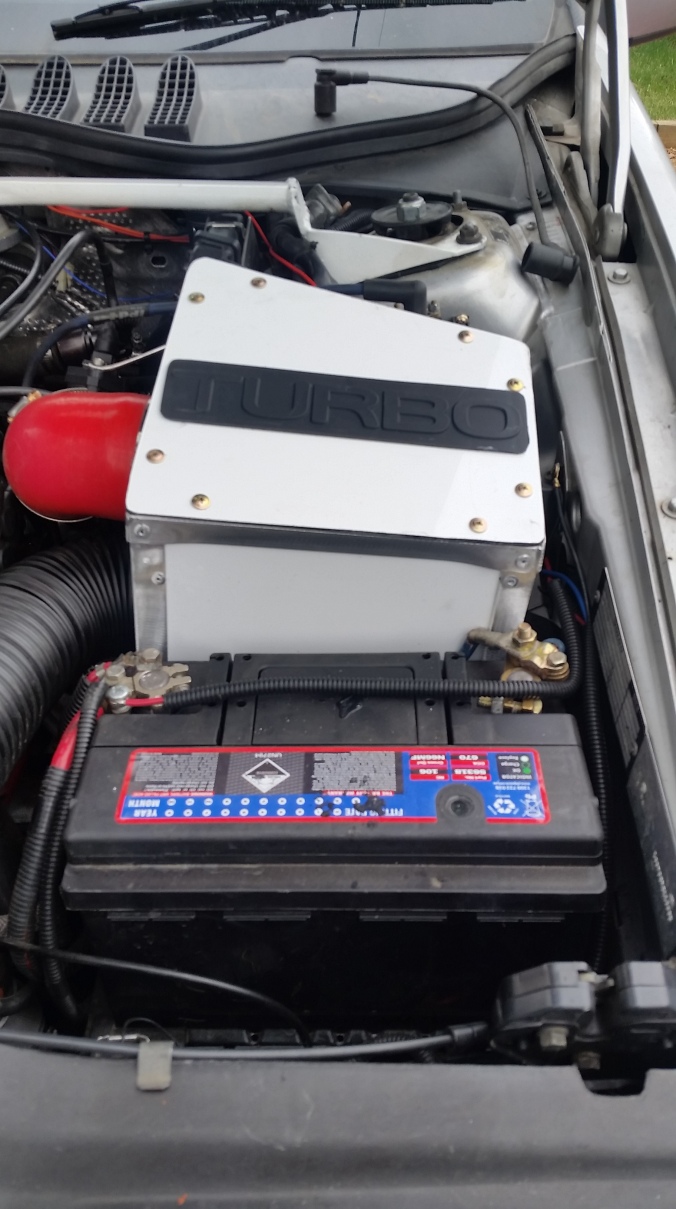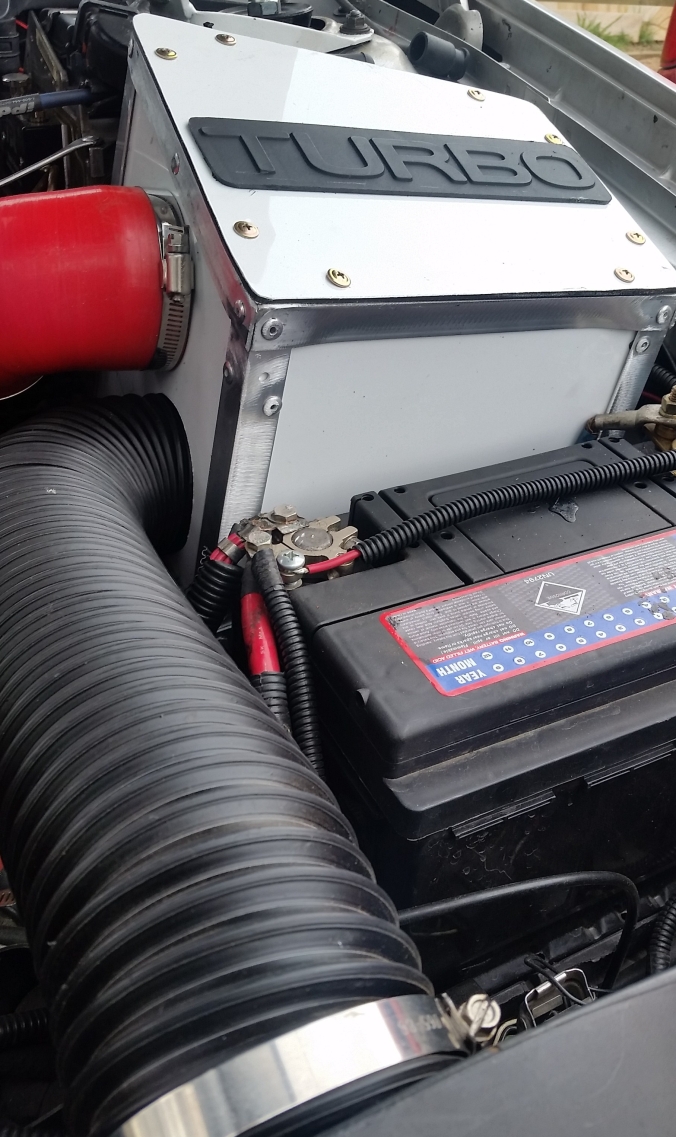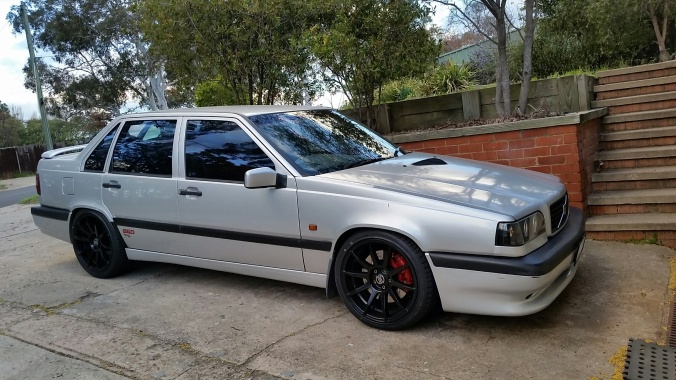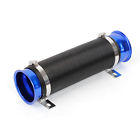Hard to believe I’m still finding things to play around with on this car! It’s been a quite a journey and according to WordPress my first Ovlov94 post was May 2013. The past five and a half years has flown by. If you’d asked me then if I’d still be playing around with this car today, I’m not sure how I’d have responded.
But I guess it’s been the “playing around” with and investing oneself into this car which is partly the reason for this longevity. I feel as though it will be incredibly hard to part with her now! It’s not a thought I can sustain for more than a moment as I consider doing likewise with a C30 or something a little more modern. Who knows where this may all end, and so for now the journey continues.
My previous post on this blog revolved around the Mamba turbo issues, specifically my disappointment with a bearing failure. Not that I blame Mamba per se, clearly they’re copying another manufacturers design, which in my humble opinion requires a little more development to prove reliable under extreme operating conditions. It was the last track day I attended that brought things to an end.
In light of my conclusion and the fact that I still intend to use Ovlov for occasional track day outings, I decided to revert to a journal bearing turbo, namely a Kinugawa TD06 SL2 20g. I’ve used 2 of the Kinugawa’s in the past, a 19t and a 20t. Both of these turbo’s performed beautifully and at no time did I have any reliability issues with either turbo.
The 20g is probably not an ideal turbo for track day outings with boost onset coming in a little later than the Mamba. If Ovlov was reserved only for track day use, then I think I’d have stuck with the Owen Hybrid TD04; great turbo for maximizing power and torque with lower rpm onset and extended power curve. But given this car is also used as a daily drive for several months of the year, I can’t help but want to experience those brief but stimulating moments of acceleration with a sh#t load of boost!
The specific variation of 20g turbo I chose, for those interested, was a unit which would ordinarily be at home on a Nissan RB25det or similar. Given there are so many variations and options on a turbo purchase these days, I’ve listed the specific unit info at the bottom of this post.
As with any significant turbo swap comes the inevitable bunch of changes to make it all work. I had to fabricate myself a 6 bolt exhaust flange adapter to suit the Nissan style turbo. Learning to TIG weld has been a game changer! The rear engine mount also required modification due to a slightly larger compressor side on the new Kinugawa. This would not normally be an issue except that I had to fabricate a new rear engine mount when I installed the M66 gearbox sometime ago.
A couple of other changes I threw at her whilst at it included the fitting of a Turbo beanie, something I’d not really looked into until recently, but they seem to make sense. Theory says that isolating heat to the turbine housing whilst reducing under hood engine temps is an efficiency gain. I also took the opportunity to fabricate a new intake airbox that completely encloses the existing POD filter whilst allowing fresh air only into the unit. Again, cooler air intake temps improve performance. This was a fun project and you can see the before and after pics below. Fairly happy with how it turned out. Realistically it’s just a variation on the oem unit but provides the opportunity for higher volumes of air flow.

After photo of Airbox – Pod filter enclosed

When I installed the POD filter to maximize airflow some time back I was always going to be pondering the benefits of doing so. Under hood summer temps in this car are significant, not such a problem in a Canberra Winter, but right now in mid summer and 36 degree C days, it’s notable.
Having completed the above changes what can I say about the driving experience. The boost onset of the 20G is a little different to the Mamba GTX30171R. It reminds me of the 19t experience. Boost comes on with a blast, it just happens a little higher in the rev range. I don’t feel as though the driving experience has suffered and boost is adequate in the mid range, it’s just that things seems to come on with a greater flurry around 4500rpm, a little later than the ball bearing turbo.
If I had to take a guess, the butt dyno says very similar power output but I reckon if you looked at a dyno curve the Mamba would look less aggressive and more linear.
One thing I did note during a couple of WOT runs was the mixture is running a little lean. I’m not convinced of any issues with the set up as such so have ordered a new tune to suit the build from the Volvo dude in Portugal, Rui. Until then I’ve not been too willing to push her real hard, especially in this summer heatwave.
Well that’s about it for 2018. Let’s see what the new year has in store for Ovlov!

 KANDO P/N– 331-02035-156 – ACCESSORIES-001
KANDO P/N– 331-02035-156 – ACCESSORIES-001
ITEM NAME– Kinugawa Bolt-On GTX Billet Turbo 3″ Anti Surge, TD06SL2-20G with 8cm Turbine Housing and 9 Blades, Turbine Wheel For NISSAN RB20DET RB25DET
APPLICATION – Nissan Skyline R32 R33 R34 2.0L 2.5L RB20DET RB25DET Engine, – Universal application: 2000~3500cc
CHRA/WHEEL SPEC – TD6SL2-20G, – Compressor wheel : 52.3 / 68.0 mm, (GTX Billet 20G 11+0 baldes / Max boost to 5.0bar), – Turbine wheel : 54.1 / 61.0 mm, (High flow TD06SL2 / light weight 9 blades)
COMPRESSOR HOUSING 3″ anti surge inlet, – 2″ compressor outlet, – A/R.60
TURBINE HOUSING – 8cm / AR.57, – T3 inlet flange, 6 bolt outlet – wastegate dia : 28.0 mm
COOLING/BEARING SYSTEM – Oil and water cooling – Journal bearing kit, (Performance thrust bearing kit)
ACTUATOR PRESSURE – 1.0bar / 14.7psi
BOOST/HP – boost limited : 2.8bar suggest boost : 1.5bar – max hp : 300~400hp






































